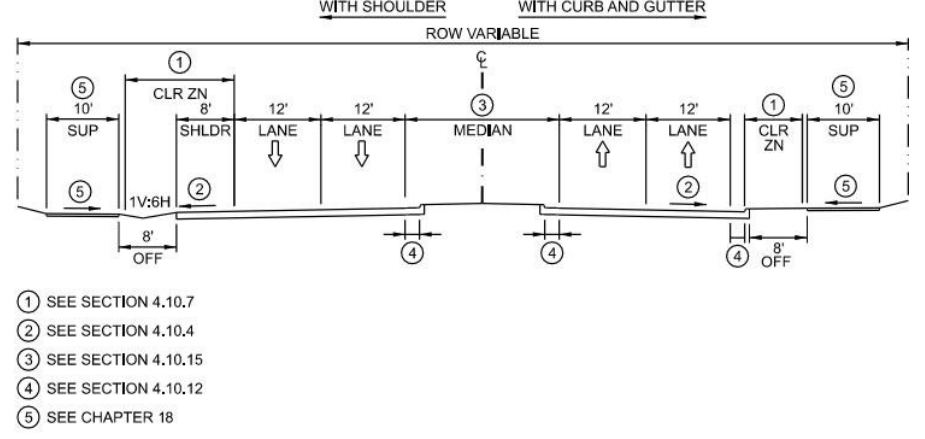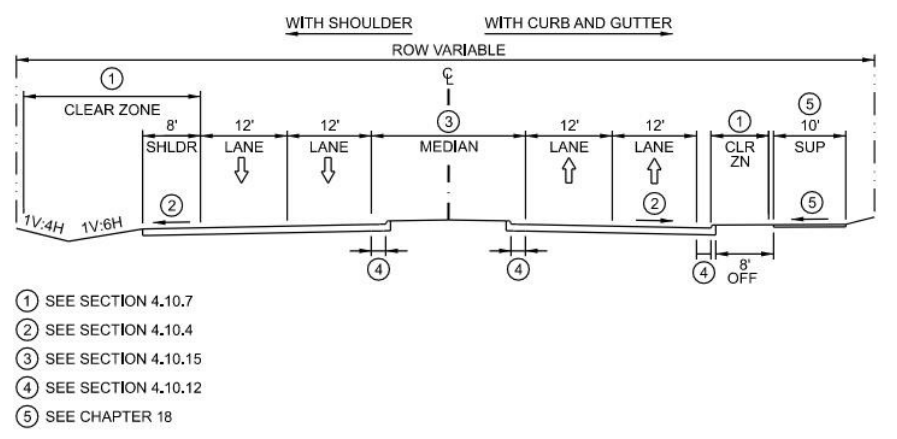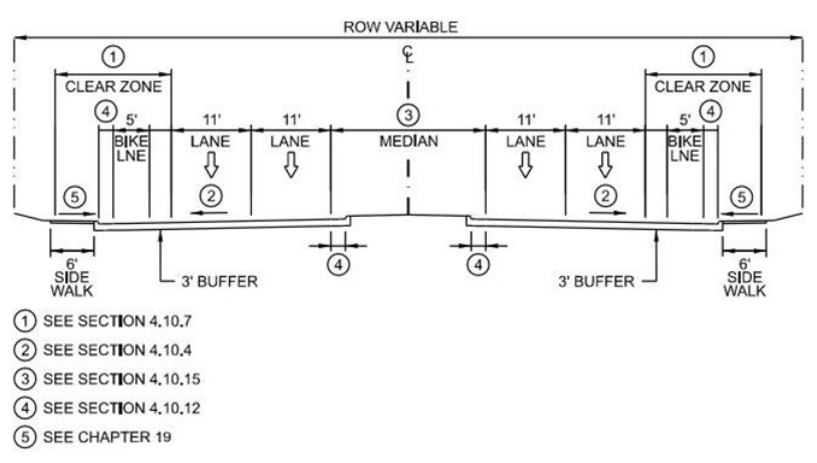6.4 Suburban, Urban, and Urban Core Design Elements
6.4.1 General Characteristics
Collectors in the urban areas are like the rural town context in that they are designed with a flexible approach to meet the needs of suburban, urban, and urban core contexts. As a collector road moves from the suburban context to the urban context, and then to the urban core context, the emphasis on maintaining higher operating speeds decreases and the importance of providing on street parking, pedestrian, and bicycle accommodations increases.
A flexible and balanced design approach to serve all transportation modes appropriately should be applied.
The balance among transportation modes may differ between projects based on demand for each transportation mode and established corridor plans.The function of collectors in suburban, urban, and urban core areas is equally divided between mobility and access. When a major objective of the design is to expedite traffic mobility, there is additional criteria that should be evaluated:
- Minimizing conflict points;
- Providing adequate storage length for all turning movements;
- Minimizing conflicts with pedestrians and bicyclists;
- Coordinating driveways on opposite sides of the road;
- Locating signals to meet progression needs; and
- Maintaining efficient circulation while providing adequate ingress and egress capacity.
6.4.2 Typical Sections
Suburban, Urban, and Urban Core example typical sections are shown in
through
below. The geometric dimensions shown in these sections may be adjusted in accordance with
.
.png/_jcr_content/renditions/original)
Figure 6-8: Suburban Typical Section – Two-Way Left Turn Lane (TWLTL)
_with_Constrained_ROW.png)
Figure 6-9: Suburban Typical Section – Two-Way Left Turn Lane (TWLTL) with Constrained ROW

Figure 6-10: Suburban Typical Section – Raised Median

Figure 6-11: Suburban Typical Section – Raised Median with Constrained ROW
.png)
Figure 6-12: Urban Core Typical Section (One-Way)
.png)
Figure 6-13: Urban Core Typical Section (Two-Way)
.png)
Figure 6-14: Urban Typical Section – Separated Shared Use Path (SUP)

Figure 6-15: Urban Typical Section – Bike Lane